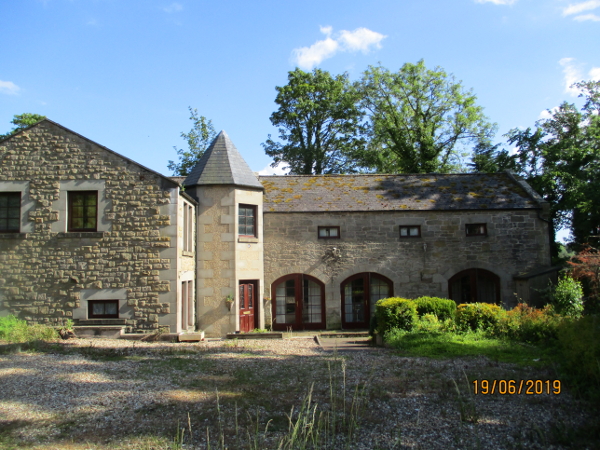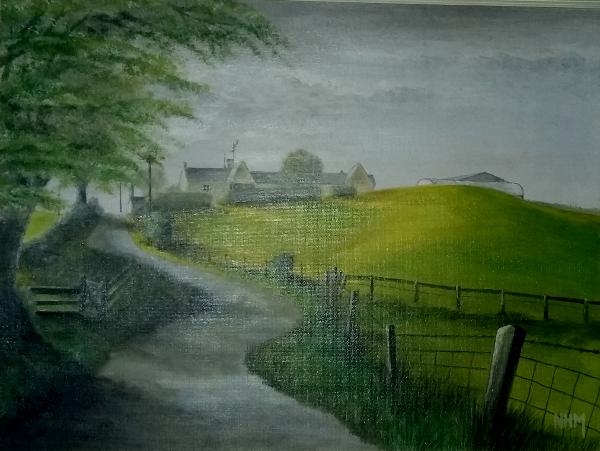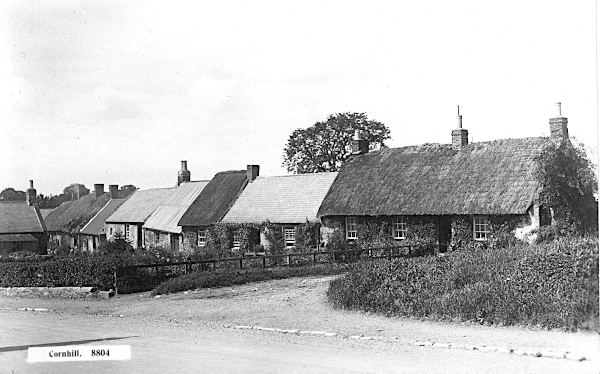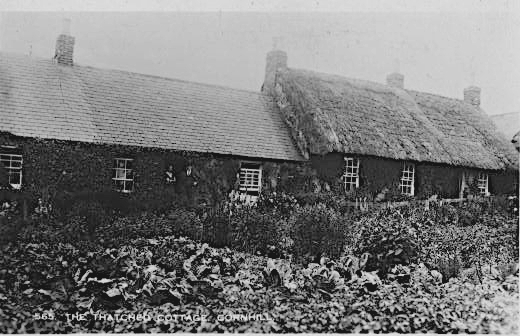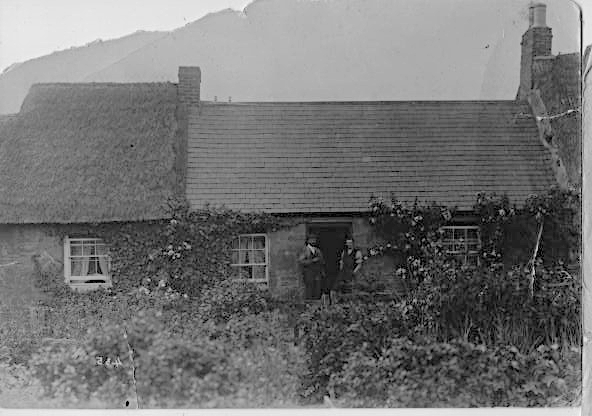The Old Vicarage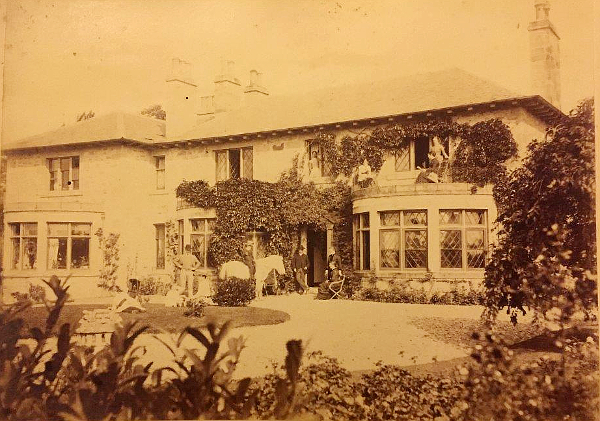
Photo taken around 1900 - 1910. It was sent to the present owner by Jocelyn Carr. Her great-grandfather was the rector, Rev Canon William Lyall Holland
The Old Mill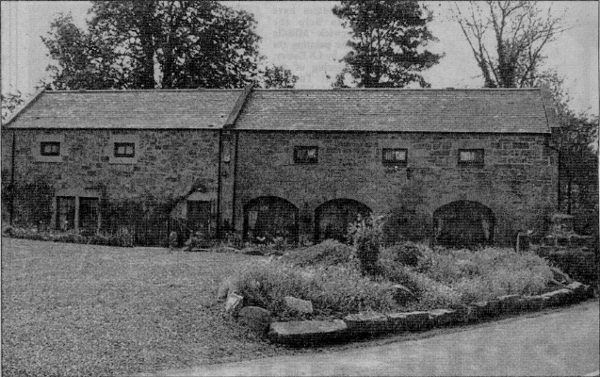
Restored Cornhill Mill, June 7th 2001 photo by Joe Payne for the Berwick Advertiser
Cornhill Mill was fed by water from a pound about 250 yards away on the Campfield Road. The water of the Mill Burn was partly canalised and carried in a short aqueduct to the over-shot wheel, thence to Duddo Water and the Tweed.
In 2001, when the Mill had been renovated and enlarged, it was reported in the Berwick Advertiser that villagers were unhappy that the old wheel had been removed and appeared to be lost. It had been made by local craftsmen. However, the then-owner of the property said that the wheel had been left for many years half-buried, overgrown and in a very dilapidated condition. A local child was trapped in it and had to be rescued by the Fire Brigade. No-one was able to trace its whereabouts.
Cornhill Mill, a poem by William Johnston, Buckie House
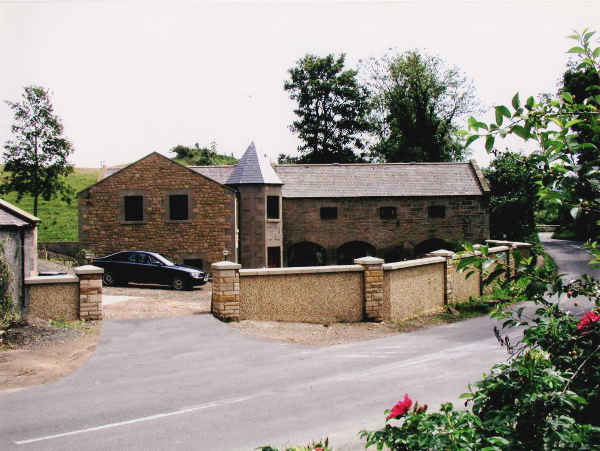
Cornhill Mill
Cramond Hill Farm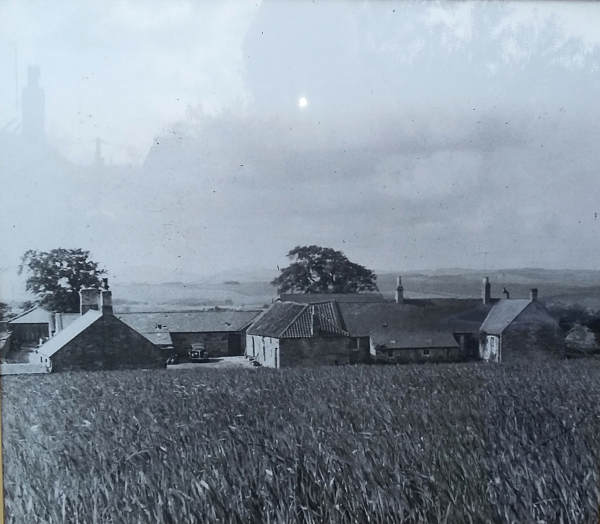
Cramond Hill Farm, was once the home of the Maxwell family. You can read memories by Elspeth Bell here
The Bird CageThis used to be the working men’s club
Medicinal spring and Bath house in Bathing Well WoodPlease refer to the informative and well-researched books by Graham Dennis.‘Spa and Cold Bath at Cornhil on Tweed’ (2025) ‘A History of Campfield, Cornhill-on-Tweed’ (2020)
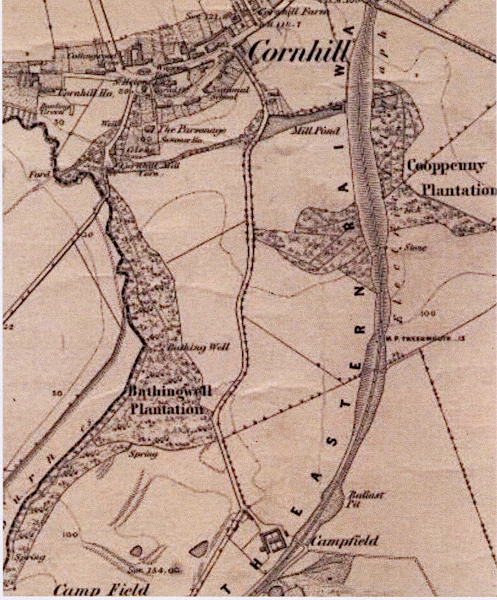
OS map 1860 - from the 2025 book> Extracts from the 2020 book have been used with his permission:- 1715 During the last 300 years, historical references have mentioned a mineral spring in, what is now, Campfield. It is probable that the spring would have always been regarded as having medicinal properties and would have been visited since very early times. One of the earliest known references was in 1715. 1750s By now interest in the spring/well was established and it features in all the major histories for nearly 100 years. It was known as a chalybeate spring, i.e. waters rich in iron salts. 1752 The church of St. Helen was rebuilt on the site of an earlier church in 1752, at the height of the spring's popularity. In records, the spring has been referred to as St. Helen’s Well and even St. Cuthbert’s Well. 1769 First reference to a permanent structure, a cold bath for bathing built near the spring was made in 1769. The spring, of the highest medical fame and most frequented, was described as being between Learmouth and Cornhill and was commonly called Cornhill Well. The bathing pool was paid for by Henry Collingwood. It was ‘neat and cased with lead and emptied by turning a cock’.
1813 The impression is given in accounts that the spring and bath were beginning to fall out of favour, maybe because Cornhill’s remote location made it less popular as other more accessible resorts flourished. 1852 It was stated by James Raine that the well ‘now wastes its healing powers and the bath is destroyed’. Hereafter, the healing waters of Cornhill begin to fade from memory with only the occasional mention. In writing this in 2020, there is no recollection amongst local people of the existence of a bathing well in Bathing Well woods, even though the name persists. 1867 Reported in ‘History of the Berwickshire Naturalists’ Club’, article written by Rev.S.A. Fyler on the Village of Cornhill
On the modern Ordnance Survey maps a well is marked in the wood at grid reference NT 858387. The spring flows into the Duddo Burn and the public footpath from the Duddo bridge to the lane to Campfield is known as Bathing Well path. Apparently young people used to meet in the area by the Duddo bridge.
If you have more information about this, please send it to us Row of Cottages to west of Cornhill Farm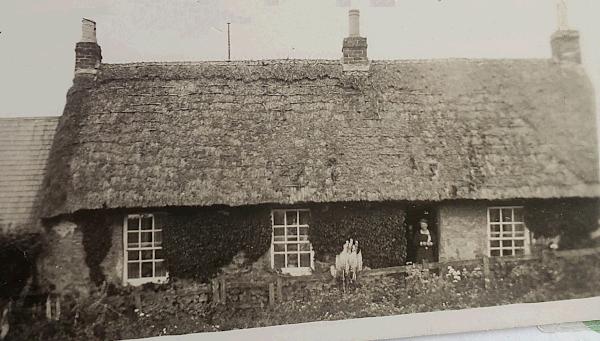
This cottage was on the left-hand side going out of Cornhill away from the shop.
We have had a response from Graham Dennis of Campfield.
Row of Cottages, courtesy of Graham Dennis Graham thinks the cottage on the right is the mystery thatched cottage shown above.
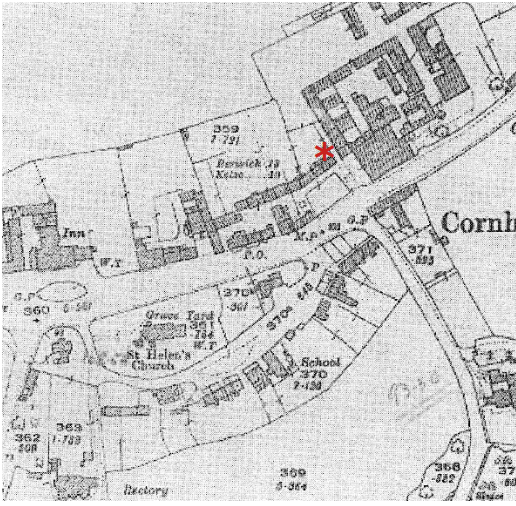
Ordnance Survey map 1920
More information about the cottages:
|
